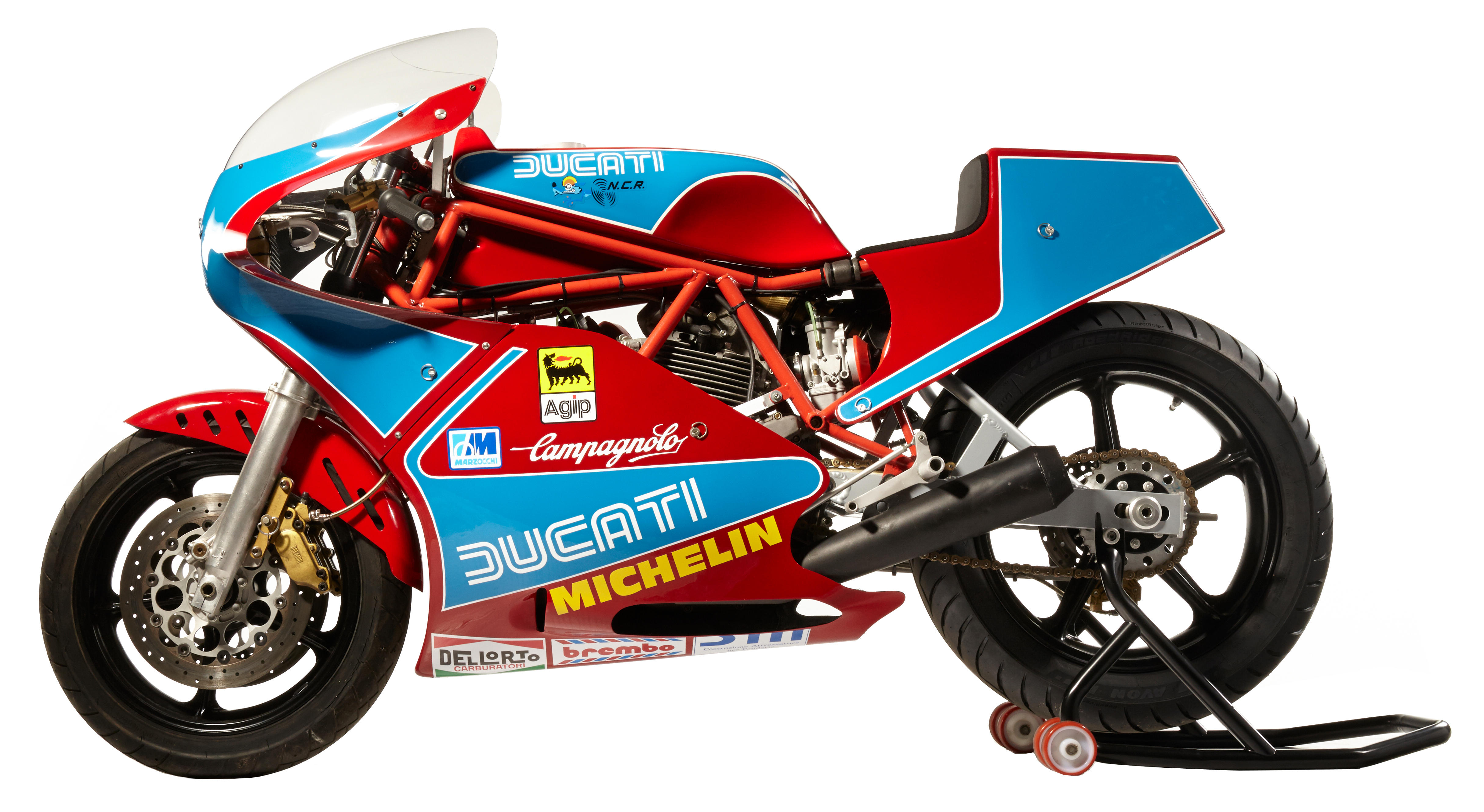In Ducati's race history, Tony Rutter's amazing run of four consecutive Formula 2 world titles on the 600-class TT2 ranks high, just below the Smart and Hailwood glories at Imola and the Isle of Man respectively. It was natural then that a larger 750-class TT1 would follow. This was basically a bored-and-stroked version of the TT2, taken out to 748cc. The Verlicchi swingarm was spread to accommodate a wider rear wheel, a move that also necessitated an offset countershaft sprocket to clear the wider-section rubber. A striking red-and-blue paint scheme differentiated the TT1 from the TT2. While the TT1 did enjoy some success in endurance and Formula 1 racing, placed well in the American Battle of the Twins series, and won the Italian F1 championship, it never reached the dizzying heights of its 600cc predecessor. A total of perhaps 60 TT1s were built. As such they are among the rarest, most collectible of Ducati racebikes, and still rank among the company's most beautiful creations. They are the ultimate extension of the belt-drive Pantah design, and bear the fingerprint of the great Fabio Taglioni, his last involvement with a Ducati racer. It's also important because the riding public's clamoring for a road-going replica of the TT1 led to the F1 series, which helped right Ducati's financial ship and set the stage for more race replicas to come. The Silverman Museum was one of the few venues to actually house not one but two TT1s. Historian Ian Fallon wrote of the series, "The diminutive TT2 and TT1 were among the finest of all catalog Ducatis. In many ways they epitomized Taglioni's philosophy of maximum performance through light weight and simplicity. There was nothing superfluous on the TT, with function determining the form of every component."
In Ducati's race history, Tony Rutter's amazing run of four consecutive Formula 2 world titles on the 600-class TT2 ranks high, just below the Smart and Hailwood glories at Imola and the Isle of Man respectively. It was natural then that a larger 750-class TT1 would follow. This was basically a bored-and-stroked version of the TT2, taken out to 748cc. The Verlicchi swingarm was spread to accommodate a wider rear wheel, a move that also necessitated an offset countershaft sprocket to clear the wider-section rubber. A striking red-and-blue paint scheme differentiated the TT1 from the TT2. While the TT1 did enjoy some success in endurance and Formula 1 racing, placed well in the American Battle of the Twins series, and won the Italian F1 championship, it never reached the dizzying heights of its 600cc predecessor. A total of perhaps 60 TT1s were built. As such they are among the rarest, most collectible of Ducati racebikes, and still rank among the company's most beautiful creations. They are the ultimate extension of the belt-drive Pantah design, and bear the fingerprint of the great Fabio Taglioni, his last involvement with a Ducati racer. It's also important because the riding public's clamoring for a road-going replica of the TT1 led to the F1 series, which helped right Ducati's financial ship and set the stage for more race replicas to come. The Silverman Museum was one of the few venues to actually house not one but two TT1s. Historian Ian Fallon wrote of the series, "The diminutive TT2 and TT1 were among the finest of all catalog Ducatis. In many ways they epitomized Taglioni's philosophy of maximum performance through light weight and simplicity. There was nothing superfluous on the TT, with function determining the form of every component."















Testen Sie LotSearch und seine Premium-Features 7 Tage - ohne Kosten!
Lassen Sie sich automatisch über neue Objekte in kommenden Auktionen benachrichtigen.
Suchauftrag anlegen